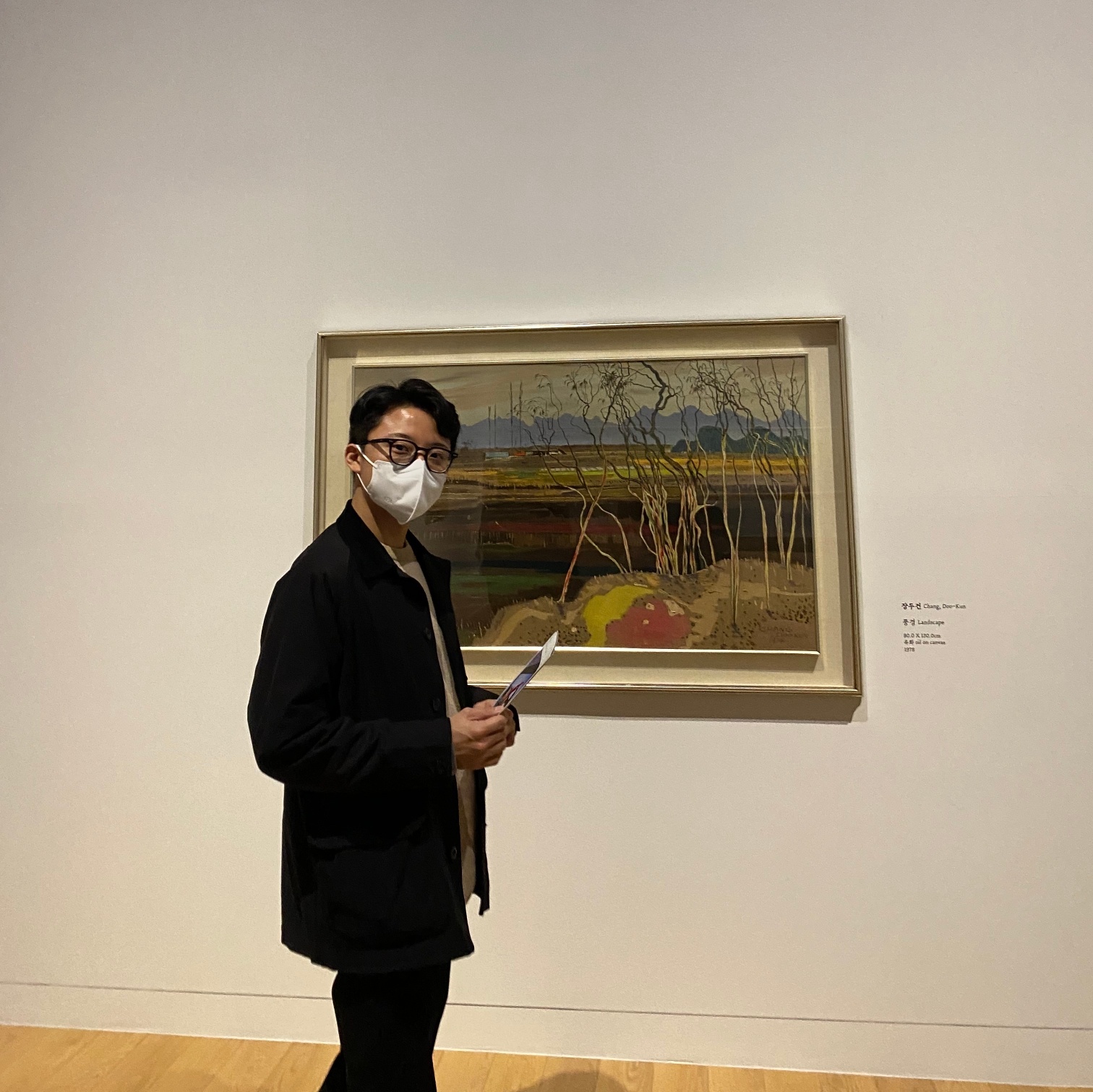1. 문제
16959번: 체스판 여행 1
크기가 N×N인 체스판이 있고, 체스판의 각 칸에는 1부터 N2까지의 정수가 한 번씩 적혀있다. 지학이는 이 체스판을 이용해서 재미있는 게임을 해보려고 한다. 지학이가 가지고 있는 말은 나이트,
www.acmicpc.net
2. 풀이
BFS를 응용해볼 수 있는 좋은 유형의 문제로, 문제의 조건에 따라 말의 방문 처리를 어떻게 꼼꼼하게 할 것 인가가 문제의 키 포인트이다. 먼저 지학이가 수행할 수 있는 동작과 조건을 살펴보자.
1) 동작
- 말을 다른 유형의 말로 변경한다(나이트, 룩, 비숍)
- 말을 이동시킨다
2) 조건
- 같은 칸을 여러 번 방문해도 된다.
- 1부터 N² 까지 각 칸을 순차적으로 방문해야 한다.
번호에 따라 순차적으로 방문해야 하므로, 체스판을 입력 받음과 동시에 1번(시작 지점) 칸이 어디에 있는지 미리 파악해둔다.
다음으로 방문처리를 위해서는 4차원 배열이 필요한데 형태를 살펴보자.
// 행, 열, 출발노드, 말의 유형
boolean[][][][] visit = new boolean[N][N][N * N + 1][3]
출발노드의 경우, 현재 K번에서 출발해 K + 1번을 탐색하고 있는 과정인지를 확인하는 용도이며, 말의 유형의 경우 3가지 유형의 말이 각 상황에 맞게 방문했는가 여부를 확인하는 것이다.
이 방문배열을 이용해 말의 방문 처리만 잘 수행해준다면, 각 말의 유형에 따라 적절히 이동시키거나 말을 변경시켜주는 작업만 BFS로 수행하면 된다.
3. 소스코드
public class Main {
static int N;
static int[][] map;
static boolean[][][][] visit;
static int solve(int startY, int startX) {
int ret = Integer.MAX_VALUE;
Queue<ChessPiece> q = new LinkedList<>();
for (int type = 0; type < 3; type++) {
q.add(new ChessPiece(startY * N + startX, type, 0, 1));
visit[startY][startX][1][type] = true;
}
while (!q.isEmpty()) {
ChessPiece now = q.poll();
int y = now.pos / N;
int x = now.pos % N;
if (now.current == N * N) {
ret = Math.min(ret, now.count);
continue;
}
// 말 교체
for (ChessPieceType type : ChessPieceType.values()) {
if (now.getType() == type || visit[y][x][now.current][type.getIdx()]) continue;
visit[y][x][now.current][type.getIdx()] = true;
q.add(new ChessPiece(now.pos, type.getIdx(), now.count + 1, now.current));
}
ChessPieceType type = now.getType();
if (type == ChessPieceType.KNIGHT) {
for (int dir = 0; dir < 8; dir++) {
int ny = y + type.getDy()[dir];
int nx = x + type.getDx()[dir];
ChessPiece next = canContinueThenGetNextNode(ny, nx, now.current, type.getIdx(), now.count);
if (next != null) {
q.add(next);
}
}
} else if (now.getType() == ChessPieceType.ROOK) {
for (int dir = 0; dir < 4; dir++) {
for (int offset = 1; offset < N; offset++) {
int ny = y + type.getDy()[dir] * offset;
int nx = x + type.getDx()[dir] * offset;
ChessPiece next = canContinueThenGetNextNode(ny, nx, now.current, type.getIdx(), now.count);
if (next != null) {
q.add(next);
}
}
}
} else {
for (int dir = 0; dir < 4; dir++) {
for (int offset = 1; offset < N; offset++) {
int ny = y + type.getDy()[dir] * offset;
int nx = x + type.getDx()[dir] * offset;
ChessPiece next = canContinueThenGetNextNode(ny, nx, now.current, type.getIdx(), now.count);
if (next != null) {
q.add(next);
}
}
}
}
}
return ret;
}
static ChessPiece canContinueThenGetNextNode(int ny, int nx, int current, int typeIdx, int count) {
if (isOutOfRange(ny, nx)) return null;
if (map[ny][nx] == current + 1) {
current++;
}
if (visit[ny][nx][current][typeIdx]) return null;
visit[ny][nx][current][typeIdx] = true;
return new ChessPiece(ny * N + nx, typeIdx, count + 1, current);
}
static boolean isOutOfRange(int y, int x) {
return y < 0 || x < 0 || N <= y || N <= x;
}
public static void main(String[] args) throws IOException {
BufferedReader br = new BufferedReader(new InputStreamReader(System.in));
BufferedWriter bw = new BufferedWriter(new OutputStreamWriter(System.out));
N = Integer.parseInt(br.readLine());
map = new int[N][N];
visit = new boolean[N][N][N * N + 1][3];
int y = 0, x = 0;
for (int i = 0; i < N; i++) {
StringTokenizer st = new StringTokenizer(br.readLine());
for (int j = 0; j < N; j++) {
map[i][j] = Integer.parseInt(st.nextToken());
if (map[i][j] == 1) {
y = i;
x = j;
}
}
}
int ans = solve(y, x);
bw.write(ans + "");
bw.flush();
bw.close();
br.close();
}
// 정점의 역할을 해줄 클래스(위치, 말 유형, 움직임 수, 출발 좌표 번호)
static class ChessPiece {
int pos, type, count, current;
public ChessPiece(int pos, int type, int count, int current) {
this.pos = pos;
this.type = type;
this.count = count;
this.current = current;
}
ChessPieceType getType() {
return ChessPieceType.getType(this.type);
}
}
// 체스 말 유형에 따른 움직임 정의
enum ChessPieceType {
KNIGHT(0, new int[]{-1, -2, -2, -1, 1, 2, 2, 1}, new int[]{-2, -1, 1, 2, 2, 1, -1, -2}),
ROOK(1, new int[]{-1, 0, 1, 0}, new int[]{0, 1, 0, -1}),
BISHOP(2, new int[]{-1, -1, 1, 1}, new int[]{-1, 1, -1, 1});
final int idx;
final int[] dy;
final int[] dx;
ChessPieceType(int idx, int[] dy, int[] dx) {
this.idx = idx;
this.dy = dy;
this.dx = dx;
}
public int[] getDy() {
return dy;
}
public int[] getDx() {
return dx;
}
public int getIdx() {
return idx;
}
static ChessPieceType getType(int idx) {
if (idx == 0) return KNIGHT;
if (idx == 1) return ROOK;
return BISHOP;
}
}
}
GitHub - kwanik-kor/BOJ: Baekjoon Online Judge - explanation of solved problems and complete code
Baekjoon Online Judge - explanation of solved problems and complete code - GitHub - kwanik-kor/BOJ: Baekjoon Online Judge - explanation of solved problems and complete code
github.com
BFS 개념은 아래 게시글 참고♥️
그래프와 BFS(Graph & Breadth First Search)
BFS(너비 우선 탐색) 알고리즘에 대해 알아보기 전에 필수적으로 알아봐야 할 자료구조는 바로 그래프(Graph)다. 그래프는 실질적으로 프로그래밍 언어 라이브러리 상에서 제공하기 보다는 추상적
kwanik.tistory.com
'Algorithm > 문제풀이' 카테고리의 다른 글
| [ 백준 6148번 ] Bookshelf 2 (0) | 2023.02.13 |
|---|---|
| [ 백준 2573 ] 빙산 (0) | 2023.02.13 |
| [ 백준 1981 ] 배열에서 이동 (0) | 2023.02.09 |
| [ 백준 26999 ] Satellite Photographs (0) | 2023.02.08 |
| [ 백준 25416 ] 빠른 숫자 탐색 (0) | 2023.02.07 |
